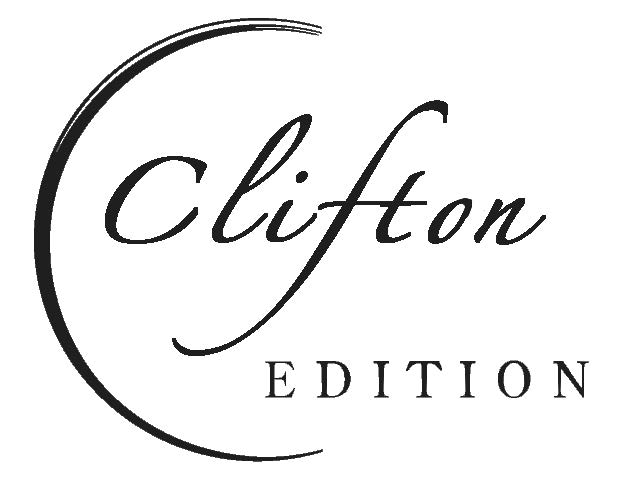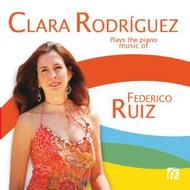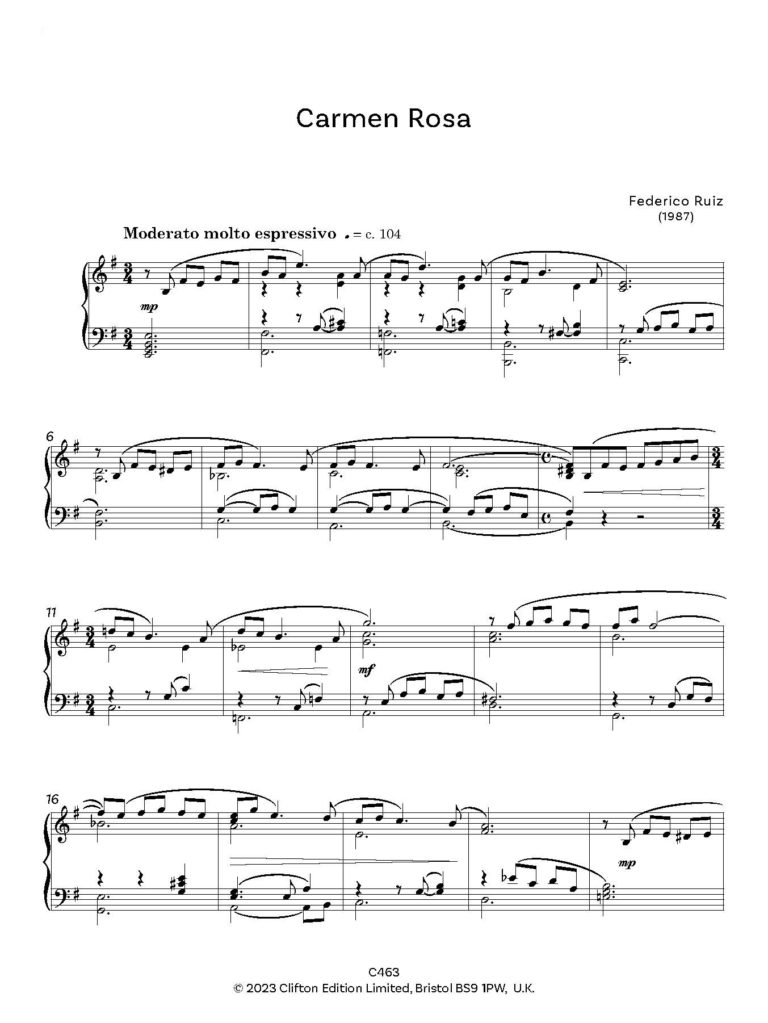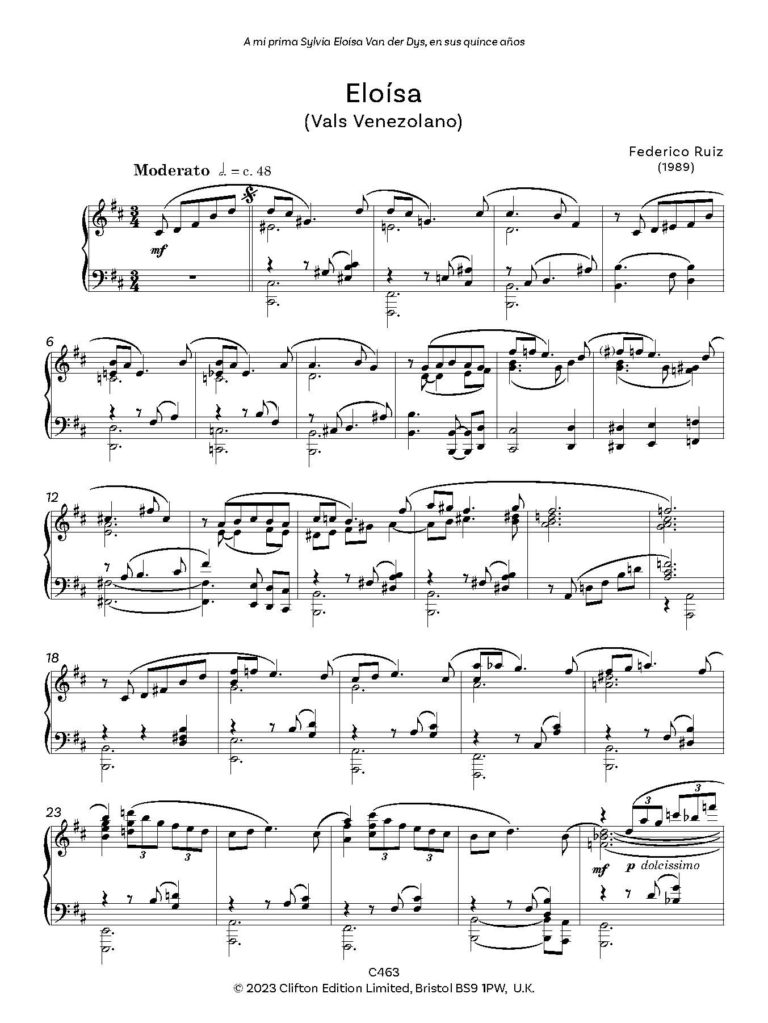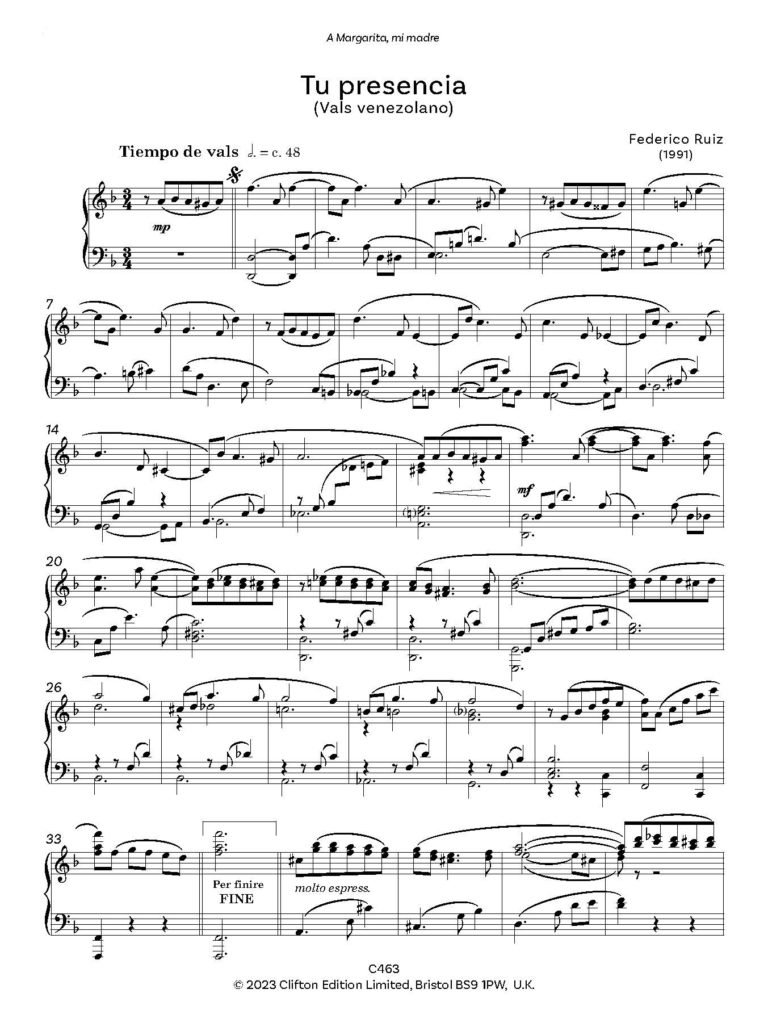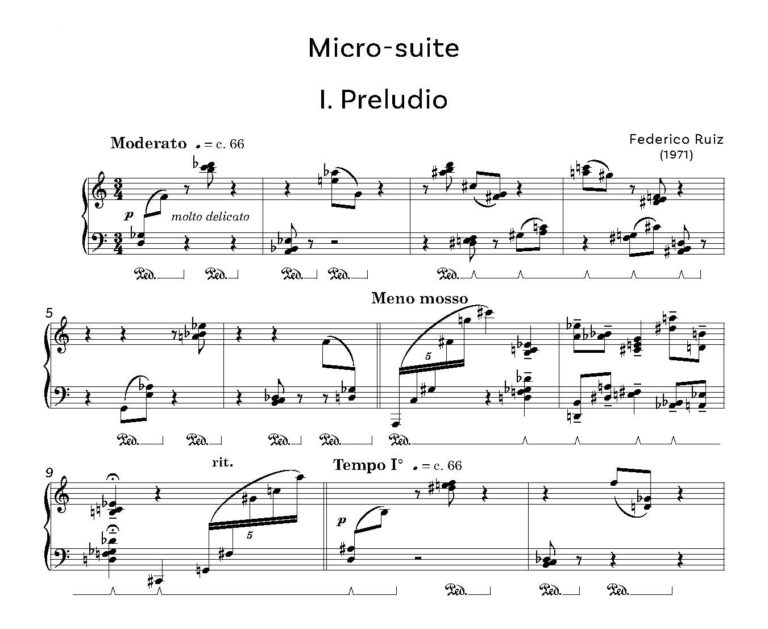This volume contains contrasting works by Federico Ruiz spanning quite a large and rich period of his compositional output that goes from his early Micro-Suite (1971), to lilting, sweet and rhythmic Venezuelan waltzes passing by the mysterious, intimate, and intense Nocturno (1994) plus pieces originally composed for film, and theatre. Real eclecticism in styles, moods and atmospheres that show Ruiz’s talents and scope.
The Nocturno is a deep, intriguing, substantial piece presenting a satisfying length which moves from different paths of the mind and the heart written in an abstract, chromatic idiom, that does not dissociate itself from the Venezuelan waltz and the joropo. One could perhaps say that there is a deconstruction of the latter. For the interpretation, the composer has suggested to me that it is allowed to have some flexibility in the tempo. Ruiz kindly dedicated it to me, and I have had the pleasure of performing it in many concerts.
Although all highly expressive, the Three Venezuelan Waltzes present in this collection as well as the piece titled Aliseo, are works that are close to the colourful Venezuelan folk tradition.
Federico Ruiz had given me two of them when we first met: “Tu Presencia” (1981) and “Eloísa” (1989) and then I attended a performance of the play “Office Number One” by Miguel Otero Silva with a fantastic actor, Elba Escobar in the role of Carmen Rosa and, I just fell in love and was very moved by the incidental music that I later discovered, by reading the programme, had been written by Federico Ruiz.
Later that evening, I called him and asked to please make a piano score of the composition, so I could have the desired piece in my hands. That is how “Carmen Rosa” waltz (1987) came to exist in a piano version.
Eloisa is another Venezuelan waltz with more jazzy harmonies where precision in the rhythm and elegant playing is also essential, as it is in most of his pieces.
Tu Presencia was dedicated to his mother, Margarita. It is written with the structure of the Venezuelan waltz, which consists of a nostalgic subject that leads to a faster, happier middle section where the typical graceful rhythm is given by the left-hand accompaniment figure of a dotted crotchet followed by a quaver and a crotchet.
The craft and magic found in the five movements of the Micro-Suite is based on a dodecaphonic row by Ernst Krenek. They remind us of the idiom of the Second Viennese School. These real miniatures seem to tell short stories. The Preludio is full of humour. I imagine dancing figures given by the jumps all over the keyboard and extreme dynamics; the phrases give the impression of a conversation with many questions and answers. The Invención is a kaleidoscopic piece where the hands mirror each other. The Passacaglia is the longest movement, at just over a minute where the prime motif is repeated three times on the bass line. For its construction Federico Ruiz uses as well the retrograde and the retrograde inversion of the twelve-tone series. It must be played expressively with dynamic contrasts between pianissimo and louder events. The Scherzo has repetitive motifs of a minor third in both hands and the Final displays virtuosic passages for the pianist.
Aliseo was originally written for the film “Aire libre” (1995), by Luis Armando Roche. It contains elements of diverse types of Venezuelan joropo. In the film, the character of Aliseo Carvallo is played by the composer himself who performs this piece on a harpsichord to welcome scientists Alexander von Humboldt and Aimé Bonpland one day at the turn of the 1800’s, as a sample of the new music from the South American land. It presents the refinement of the late European classical era in fusion with Venezuelan folk music.
CONTENTS
- Nocturno
- Three Venezuelan Waltzes:
Carmen Rosa
Eloisa
Tu Presencia - Micro-Suite
- Aliseo
